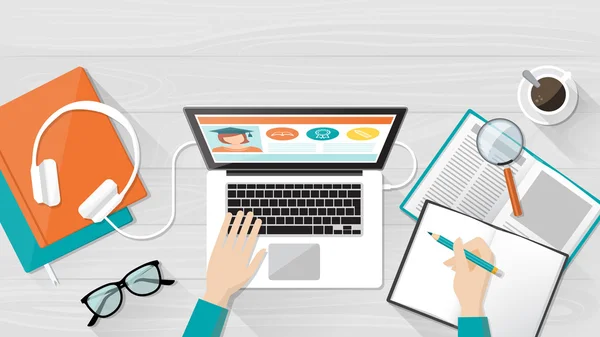In-person V.S Online

October 5, 2020
In-Person (Junna Chang)
Social Interaction: For in-person, students are able to engage in meaningful conversations and establish more personal relationships with his/her teachers and peers. Because of the genuine connections to other individuals, students are able to have a more collaborative learning experience. Some students may prefer in-person learning because the self-discipline required for online learning may be overwhelming. With a guiding adult and other teenagers in the same boat, the learning environment may be more effective for those who prefer an atmosphere on a more personal basis.
Pace: Although students already have a predetermined pace for in-person learning, it may be more effective depending on the learning style of a student. The teachers are certified guides who plan curriculums at a reasonable pace. Students rely on the educator’s credibility rather than their own for an efficient learning experience. Also, some students may need the extra-push from teachers to motivate themselves through the rigors of education. However, if a student rather trusts the pace of his/her own discipline, then online may be the recommended option.
Learning environment: Classrooms are purposefully built with the intentions to provide students and teachers with a maximized learning environment. The small details such as motivational posters, the iconic desks, and the head white board are all indications of a classic learning place. The coziness of home may distract some students from fostering undivided attention; therefore, the atmosphere of classrooms allow for more productive learning. A student is more likely to be attentive and learn social skills under the reasonable social pressures and protocols of in-person educational circumstances.
Viability: Despite the plentiful resources the school provides for the students, the health concerns from the pandemic has limited the students’ accessibility. However, following health protocol and strictly adhering to safety guidelines, in-person schooling takes into serious consideration of the safety of the faculty and students foremost. Although the in-person option may not be viable to those with health concerns for family members or themselves, those students who choose in-person, trusting the school’s modified system, have access to the tools that they might not have at home .
Online (Tina Luo)
Social Interaction: Through a virtual platform, students have limited social interaction with their teachers and classmates. Developing connections on a personal level becomes more difficult with a technological barrier, and students often avoid speaking during meetings.  Without one-on-one time, teachers struggle to get to know their students, and students struggle to get to know their peers. However, the more independent learning style can benefit more introverted students as well as those who struggle with social anxiety, in which case online school provides a comfortable learning experience.
Without one-on-one time, teachers struggle to get to know their students, and students struggle to get to know their peers. However, the more independent learning style can benefit more introverted students as well as those who struggle with social anxiety, in which case online school provides a comfortable learning experience.
Pace: Students have more flexibility with their pacing, which provides them with opportunities to work during times of day most convenient for them. Without the pressure from other students to speed up or slow down, completing schoolwork becomes more efficient and personalized to the student, helping to reduce stress. However, with increased flexibility comes increased responsibility, and students must work to establish self-discipline in order to finish their work on time without having the external accountability that comes from physically going to school. As students cultivate a sense of independence, they develop future habits for success.
Learning environment: Students have the ability to work from their homes, and the familiarity of the environment fosters a more comfortable learning experience. For instance, should they need to take a break, students have the option to leave the room and move around without the fear of distracting other students. Students primarily associate school with learning and home with resting, but a designated workspace at home helps to mimic the atmosphere of school with conditions conducive to learning. However, working at home also comes with increased personal and familial distractions.
Viability: Learning online allows students to eliminate the risk of getting the coronavirus from their peers at school. For students who have health issues or have family members with health issues, any possibility of infection would prove disastrous. However, not all students have the ability to work online at home. Some students do not have the resources to have an efficient learning experience, and their environment may not allow them to focus effectively. Even so, with the ongoing pandemic, many students prioritize health concerns above all else, even at the price of a less convenient learning experience.

